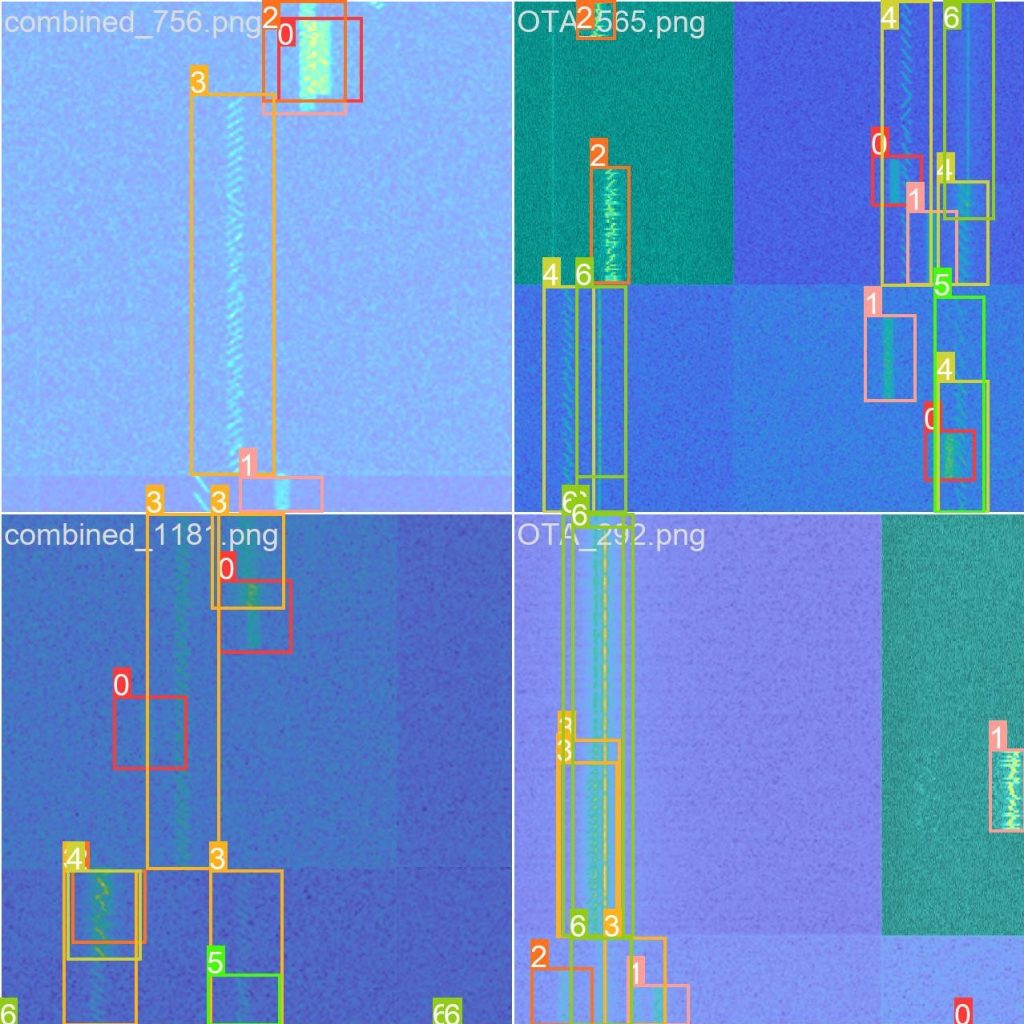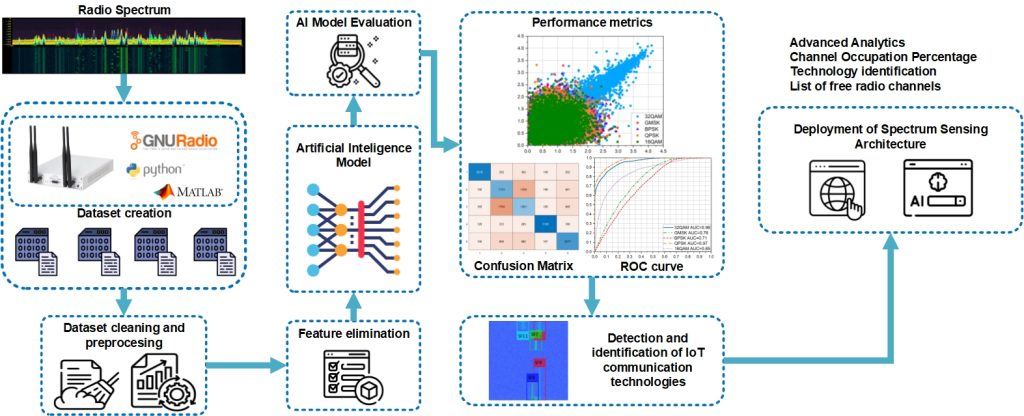This work was supported by a grant of the Ministry of Research, Innovation and Digitization, CNCS – UEFISCDI, project number PN-IV-P2-2.1-TE-2023-1476, within PNCDI IV.
Artificial Intelligence Spectrum Sensing Algorithms for large scale high-density Internet of Things (IoT) Networks

Scope of the IoTSensing research project
The IoTSensing project entails the design, implementation and testing of spectrum sensing AI algorithms that are able to perform radio spectrum sensing with the main purpose to increase the performance level of large-scale high-density IoT networks. The algorithms will be validated in real operating conditions and will integrate advanced machine learning and deep learning architectures to achieve the highest level of performance. The novel platform will also integrate an interface to visualize and analyze IoT radio spectrum usage, detect interference, and generate detailed reports on radio spectrum occupancy and even radio channel allocation patterns.
”Efficient spectrum sensing is the backbone of modern wireless communication. In a world where connectivity fuels innovation, the ability to intelligently manage and optimize radio frequencies is key to unlocking the full potential of emerging technologies like IoT, 5G, and beyond. ”
Spectrum Sensing
Radio Spectrum
Spectrum Sensing Intelligence
IoT Devices
Spectrum Sensing Awearness
Objectives
Main objective: Design, implementation and testing of spectrum sensing AI algorithms that are able to perform radio spectrum sensing with the main purpose to increase the performance level of large-scale high-density IoT networks.
- O1: The first objective is to create, develop and record the datasets that will be used for the AI spectrum sensing algorithm training, validation, and testing.
- O2: The second objective is the training and validation of the developed AI algorithms that will be able to classify different IoT technologies (e.g. LoRa, SigFox). This objective also entails the entails the deep learning algorithm design where different configuration and neural networks will be analyzed and evaluated.
- O3: The third objective is to experimentally evaluate, test and optimize the developed AI spectrum sensing algorithms prototypes. These tests will be firstly performed in various laboratory conditions and also in real time operating conditions.
- O4: The fourth objective is to maintain and further develop our young research team, by financially supporting two highly performant Postdocs young researchers and also a PhD student that will add original and high-impact research results to his thesis.
- O5: The fifth objective is to increase the visibility of our research group included in this research proposal and to contribute to the international visibility of University of Suceava and of the Romanian research by publishing high quality and novel research results meanwhile, contributing to the future IoT networks.

Our Mission
Our mission is related to finding solutions to improve IoT network’s scalability by using advanced spectrum sensing algorithms that can enable channel allocation techniques and optimized radio channel allocation and utilization in large scale high density IoT architectures. The design of different spectrum sensing algorithms is currently an open issue, and further improvements are needed.

By combining expertise in machine learning, signal processing, and communication technologies, we empower industries to maximize spectrum usage, enhance network performance, and meet the growing demands of modern wireless systems. Our solutions cater to
- Telecommunications operators,
- Smart Cities applications,
- IoT network operators,
- Defense and military applications,
and any industry where reliable and efficient wireless communication is essential.